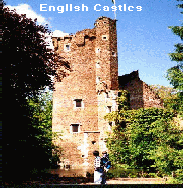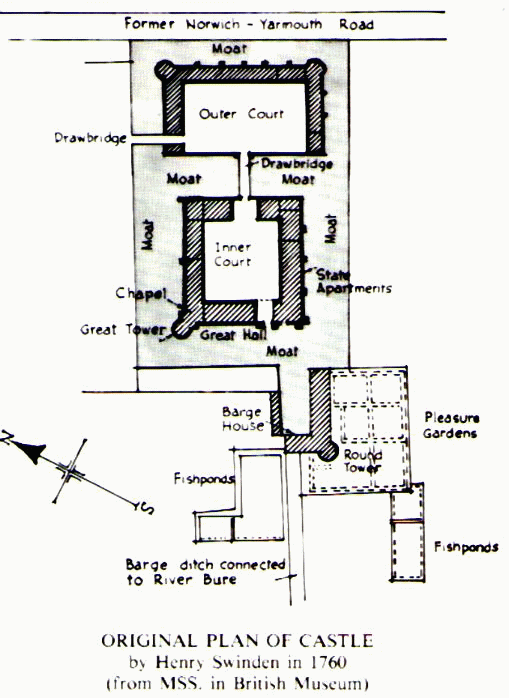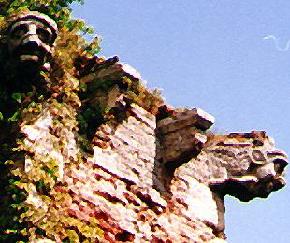

 |
 |
| Caister Castle- Near Great Yarmouth | Castle Map |
Caister was built in 1432 by Sir John Falstaff, under the reign of Henry VI (1422-60), who granted only 5 such licenses, with Caister being one of them. The most interesting thing about Caister is the fact that it is built out of Brick, and is one of the very few to be built that way. The entire castle was moated, and as one can see from the picture, well defended with gunports.
As can be seen from the above map, the castle consisted of two rectangular courtyards, known as the Inner court, and the Outer court. Both were surrounded by the moat, and connected via a drawbridge across the moat. The Inner court contained all the state apartments and the main living quarters including: wardrobe, chapel, two halls, kitchen, larder, cellar, pantry, armoury, brewery, bakery, stables, and various stores. The Inner Court was offset by a tall slender tower on the North-west side of the inner court. this tower stands 90 ft high, and is 25 ft in diameter. There are five stories within this tower, and the spiral staircase still exists today, making it possible to ascend the tower to the top, affording a beautiful view of the castle ruins and surrounding grounds.

Having said all this, attacks against the castle were rare- infact up until 1468- it seems that there were none at all. The castle was actually taken by seige in 1469, ten years after the death of Fastolfe, by a reported 3000 men (against 30 from the castle!). The seige was commanded by the Duke of Norfolk, who believed that it was he who was entitled to Caister, and not the new owner- a man by the name of John Paston. The seige lasted 5 weeks before the defenders surrendered, and the Duke moved in, and stayed there until 1475, when the castle was returned to it's rightful owners.
